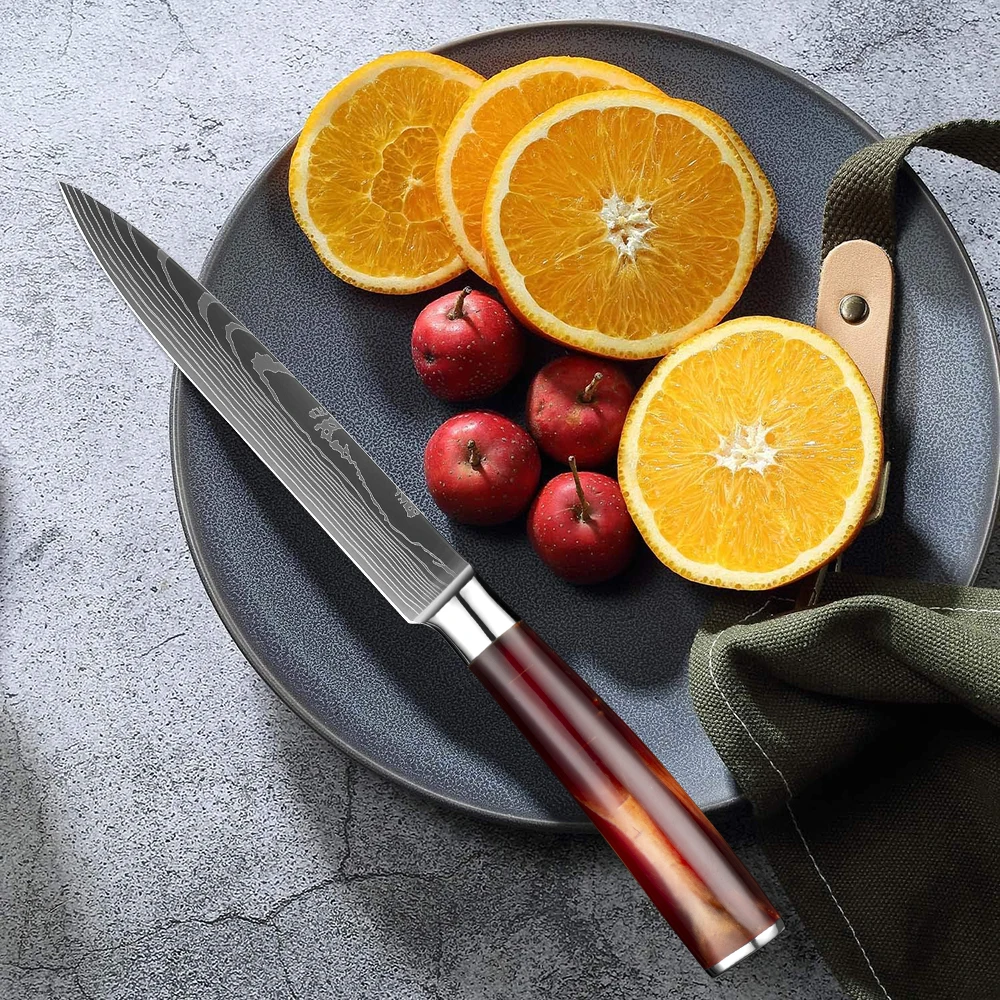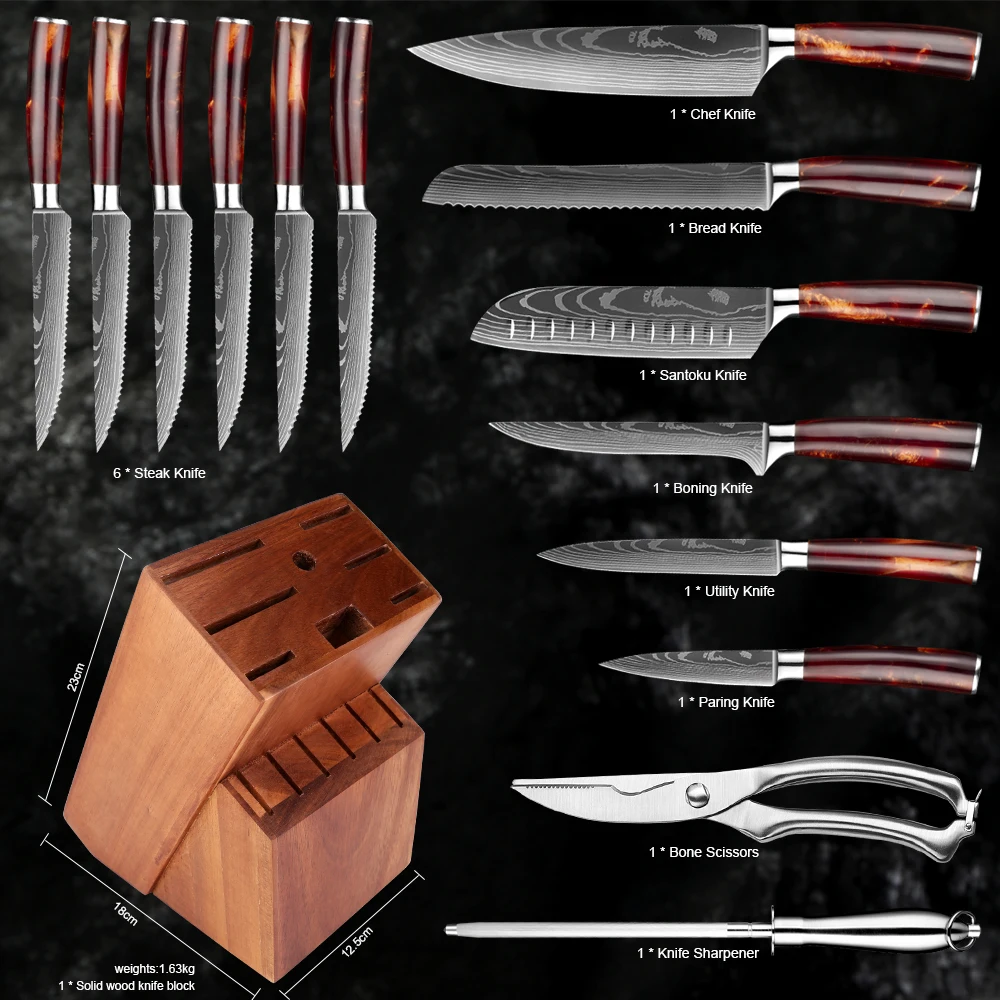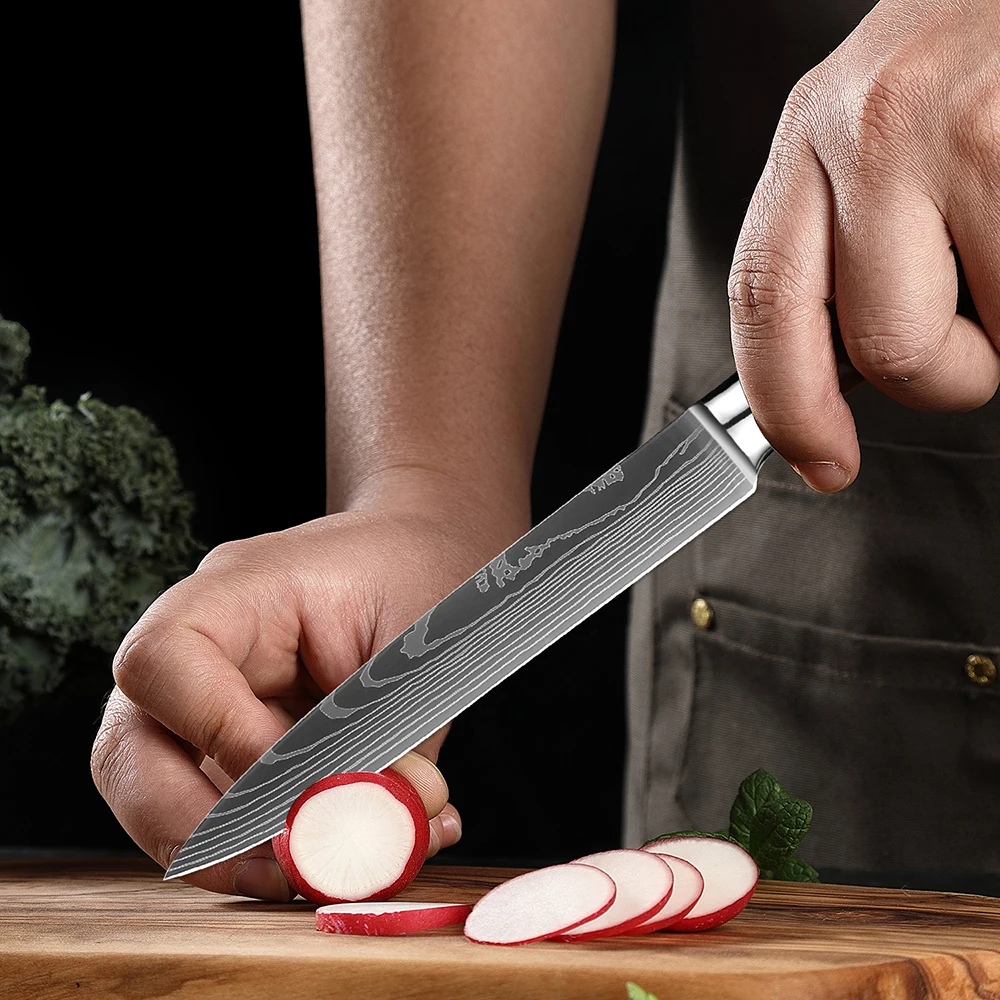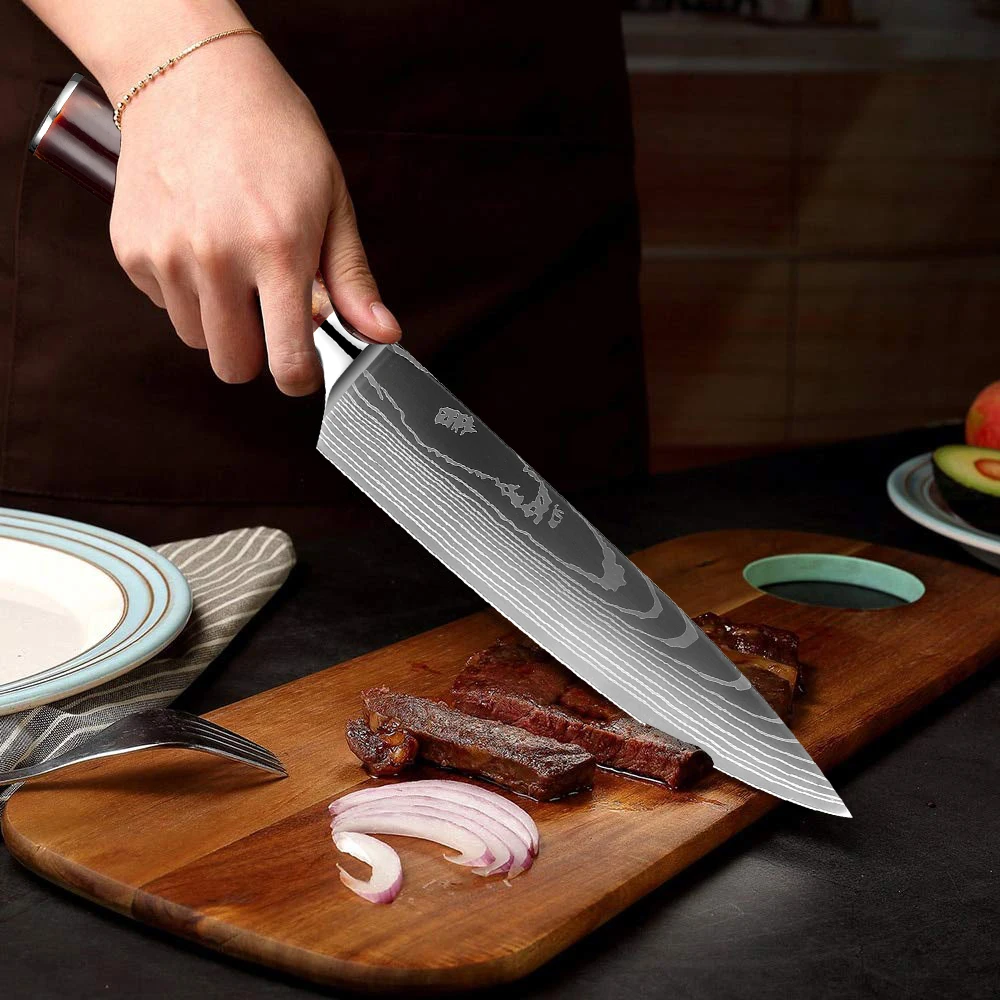Introduction
Japanese kitchen knives are renowned for their exceptional quality, craftsmanship, and precision. They have become increasingly popular around the world due to their unique designs and functionality. In this guide, we will explore the different types of japanese kitchen knife set, the materials used, how to care for them, and why investing in a complete knife set can elevate your cooking experience.

Understanding Japanese Kitchen Knives
The History of Japanese Knives
Japanese knives have a rich history that dates back centuries. They evolved from traditional sword-making techniques. The art of crafting knives is deeply rooted in Japanese culture. Blacksmiths would forge blades using high-quality steel, focusing on sharpness and durability. Over time, these techniques were adapted for kitchen use, resulting in knives that are both functional and beautiful. Each region in Japan has its own unique styles and traditions related to knife making.
The history of Japanese knives also reflects the country’s culinary evolution. As food preparation became more sophisticated, the demand for specialized knives grew. Chefs needed tools that could perform specific tasks with precision. This led to the creation of various knife types, each designed for a particular purpose. Today, Japanese knives are celebrated not only in Japan but around the world.
Types of Japanese Kitchen Knives
Japanese kitchen knives come in many shapes and sizes, each serving a specific function. Here are some of the most common types:
- Gyuto (Chef’s Knife): The gyuto is the Japanese equivalent of a Western chef’s knife. It features a tapered blade and is versatile enough for slicing, dicing, and chopping a variety of ingredients. Typically, it ranges from 180mm to 300mm in length.
- Santoku: The santoku is a multipurpose knife known for its shorter, wider blade. It excels at cutting vegetables, fish, and meat. The name “santoku” translates to “three virtues,” referring to its ability to handle three types of food.
- Nakiri: The nakiri is a vegetable knife with a straight edge. It is designed for precise chopping and slicing of vegetables. Its rectangular shape allows for easy cutting motions, making it a favorite among home cooks and professional chefs alike.
- Deba: The deba is a heavy-duty knife used for filleting fish and cutting through bones. Its thick blade provides strength and durability, making it ideal for tasks that require force.
- Yanagiba: The yanagiba is a long, thin knife traditionally used for slicing raw fish for sushi and sashimi. Its sharp edge allows for clean cuts, preserving the texture and flavor of the fish.
Each of these knives has its own unique characteristics. Understanding their differences helps you choose the right knife for your cooking needs.

Materials Used in Japanese Knives
High-Carbon Steel vs. Stainless Steel
Japanese knives are typically made from either high-carbon steel or stainless steel. Both materials have their advantages and disadvantages.
High-Carbon Steel: This type of steel is known for its ability to hold a sharp edge. It can be honed to an incredibly fine point. High-carbon steel knives are often lighter and easier to sharpen. However, they require more maintenance. They can rust and stain if not properly cared for. Regular oiling and careful drying after use are essential to keep these knives in good condition.
Stainless Steel: Stainless steel knives are more resistant to rust and staining. They require less maintenance than high-carbon steel knives. However, they may not hold an edge as well. While modern stainless steel technology has improved significantly, many chefs still prefer high-carbon steel for its superior sharpness.
Damascus Steel
Damascus steel is another material commonly used in Japanese knives. This type of steel is created by layering different types of steel and forging them together. The result is a blade with a beautiful pattern and exceptional performance. Damascus steel offers both durability and sharpness, making it a popular choice for high-end knives.
The unique patterns of Damascus steel blades also add an aesthetic appeal. Many chefs appreciate the beauty of a well-crafted Damascus knife as much as its functionality. This blend of artistry and utility is part of what makes Japanese knives so desirable.
Choosing the Right Japanese Knife Set
Consider Your Cooking Style
When selecting a Japanese knife set, consider your cooking style and preferences. Are you a professional chef or a home cook? Do you primarily prepare vegetables, meats, or seafood? Understanding your own needs will help you choose the right combination of knives.
For instance, if you focus on preparing vegetables, a set featuring a nakiri and a santoku might be ideal. If you often work with fish, then including a deba and a yanagiba would be beneficial. A good knife set should cater to your specific cooking tasks.

Quality and Craftsmanship
Quality is crucial when investing in a Japanese knife set. Look for knives that are handcrafted by skilled artisans. These knives often feature traditional forging techniques and high-quality materials. Research the brand and the knife-making process to ensure you are purchasing a reliable product.
A well-crafted knife will not only perform better but also last longer. Investing in quality knives is an investment in your cooking future. Make sure to read reviews and seek recommendations from experienced cooks to find reputable brands.
Budget Considerations
Japanese knife sets can vary greatly in price. While it’s tempting to go for the cheapest option, remember that quality matters. A good knife set is an investment that will pay off in the long run. Consider your budget and look for sets that offer the best value for your money.
There are many mid-range options available that provide excellent quality without breaking the bank. Assess your needs and determine how much you are willing to spend. This will help narrow down your choices and lead you to the right set.
Caring for Your Japanese Knives
Proper Cleaning Techniques
Taking care of your Japanese knives is essential for maintaining their performance. Always hand wash your knives with mild soap and warm water. Avoid putting them in the dishwasher, as the high heat and harsh detergents can damage the blade and handle.
After washing, dry the knives immediately with a soft cloth. Leaving moisture on the blade can lead to rust and corrosion. For high-carbon steel knives, consider applying a thin layer of food-safe oil to the blade after cleaning to provide additional protection against rust.
Sharpening and Honing
Regular sharpening and honing are critical for keeping your knives in optimal condition. Use a whetstone to sharpen your knives, following the correct angle for each type of blade. For maintaining the edge between sharpenings, use honing steel regularly. This will help realign the blade and keep it sharp.
Investing time in learning proper sharpening techniques will benefit your knives in the long run. A sharp knife is not only safer but also more effective in food preparation.
Storage Solutions
Proper storage is equally important for your Japanese knives. Store them in a knife block, magnetic strip, or protective sheaths to prevent damage to the blades. Avoid tossing them in a drawer, as this can dull the edges and cause scratches.
If you have limited space, consider using a wall-mounted magnetic strip. This keeps your knives easily accessible while also showcasing their beauty. Proper storage will prolong the life of your knives and maintain their performance.
Benefits of Investing in a Japanese Kitchen Knife Set
Enhanced Cooking Experience
Investing in a Japanese kitchen knife set can significantly enhance your cooking experience. Sharp, high-quality knives make food preparation easier and more enjoyable. When you have the right tools, cooking becomes a pleasure rather than a chore.
A good knife set allows you to work efficiently, enabling you to focus on creating delicious meals. You’ll find that tasks like chopping vegetables or slicing meat become quicker and more precise. This efficiency can inspire you to try new recipes and experiment in the kitchen.
Improved Culinary Skills
Using quality knives can improve your culinary skills. As you become more comfortable with your knives, your confidence in the kitchen will grow. You’ll learn to handle different ingredients more effectively, allowing for greater creativity in your cooking.
With the right knives, you’ll also be able to achieve better results. Clean cuts lead to more appealing presentations, which can elevate your dishes. As you refine your skills, you’ll notice improvements in both technique and taste.
Longevity and Durability
Japanese knives are built to last. With proper care, a high-quality knife set can serve you for many years. Unlike cheaper alternatives that may dull quickly or break, well-crafted Japanese knives retain their sharpness and integrity over time.
Investing in a durable knife set means you won’t need to frequently replace your tools. This not only saves money in the long run but also reduces waste. A good knife set becomes a lifelong companion in your culinary journey.
Conclusion: Embrace the Art of Japanese Knives
In conclusion, a Japanese kitchen knife set is a valuable addition to any kitchen. The combination of history, craftsmanship, and functionality makes these knives exceptional tools for cooking. By understanding the different types of knives, the materials used, and how to care for them, you can elevate your culinary experience.
Whether you’re a seasoned chef or a home cook, investing in a quality knife set will enhance your skills and enjoyment in the kitchen. Embrace the art of Japanese knives, and you will find yourself inspired to create delicious meals with ease and precision.

